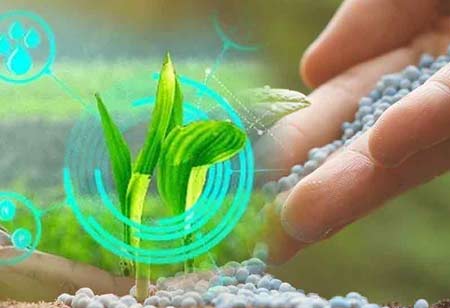Thank you for Subscribing to Agri Business Review Weekly Brief
Satellite Imagery In Agriculture
Satellites are one of the most used in agriculture to perform remote sensing.

By
Agri Business Review | Monday, October 10, 2022
Stay ahead of the industry with exclusive feature stories on the top companies, expert insights and the latest news delivered straight to your inbox. Subscribe today.
Satellite imagery allows monitoring crops remotely, precisely, and efficiently.
FREMONT, CA: Satellites are one of the most used in agriculture to perform remote sensing. Satellite imagery allows monitoring crops remotely in a precise and efficient way.
The spatial and temporal resolution of satellites
Many satellites acquire multispectral images from space: the most common are Sentinel-2 and Landsat 8, Planetscope, and Sky Sat. The images acquired have a solid resolution of a few meters: Landsat 8 gives data along with a spatial resolution of 30 m, while Sentinel-2 of 10, 20, or 60 m (based on the band), Planetscope of 3 m & SkySat of 1 m.
The temporal resolution is almost always regular. For instance, Landsat 8 is available every 16 days, while Sentinel-2 is available every 3/5 days (based on the zone). On the other hand, Planetscope and Skysat have a daily resolution.
The satellites' regular passage determines the data's availability in several phases of the growing season. Still, it is also important to underline that the data is not usable during the satellite transit, where clouds cover the area under examination.
Vegetation indices obtained by satellite
Regarding satellite images and remote sensing in general, it is essential to introduce the concept of vegetation index to comprehend how they enable the monitoring of the health of crops without the necessity to go to the field.
Vegetation indexes are the main tool of Smart Farming:
The use of satellite data and their proper interpretation decrease the interventions in the field and make a structured crop scouting activity sustainable from the economic perspective.
The indices can describe the plant's vigor, providing a measure of its general health or specific problems like water stress or the amount of chlorophyll.
Types of vegetation indexes
NDVI: it allows for evaluating the health of the vegetation and analyzing the reflectance of the vegetation in the Red and NIR bands.
SAVI: allows for evaluating the conditions of vegetation development in the emergency and initial stages of development, as it implements a correction to bare soil.
LAI: leaf area index that estimates the plant's leaf area expressed in m2 on m2.
TCARI/OSAVI: a specific index that identifies chlorotic areas within the field.
WDRVI: it examines the health of the vegetation and is specifically helpful when the vegetation is well-developed and lush, & the other vegetation indexes tend to saturate.
GNDVI (Green-NDVI): it indicates the health of the vegetation and reduces the saturation effect when the vegetation is particularly developed.
NDMI: a specific index that evaluates the water content of the vegetation, hence usable only with developed vegetation.
NMDI: can be utilized to assess the water content of the soil; in the case of bare soil, a large index value indicates dry soil. In front of vegetation, a high index value demonstrates that the plant is not under water stress.
Historical and comparative data
In agriculture, it is important to monitor and compare crop development on different plots and during different years.
The four main steps for the explanation of vegetation indices are, in fact, the multi-temporal analysis and the comparison between indices:
1. The assessment of the phenological phase of the plant.
2. The evaluation of the historical trend of indices assesses whether there are anomalies and whether they are related to known phenomena.
3. The identification of indices is to be compared.
4. The comparison between indices to detect critical areas to be verified in the field.
Comparing satellite images allows us to evaluate the relationships between distinct indices (such as low vigor and high water stress) and the feasible causes of their variance.
The chart of the historical trend of vegetation indexes also allows us to track what happens in the field and evaluate the changes compared to previous years' data.





